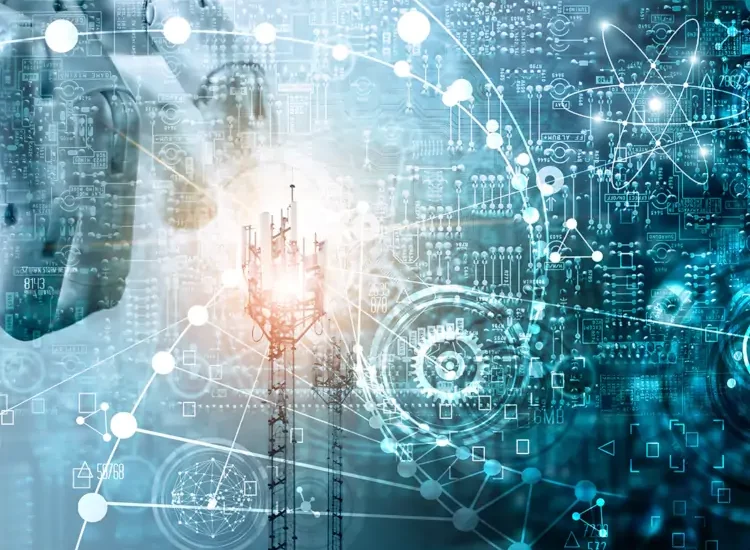How Blockchain, AI, and IoT are Shaping Our Future
In an era of rapid technological progress, three key technologies — blockchain, artificial intelligence (AI), and the Internet of Things (IoT) — are converging and driving unprecedented change across all sectors. This article delves into the mechanics of these technologies and how their interplay is sculpting our future.
Understanding the Core Technologies
1. Blockchain
The blockchain is a decentralized, distributed ledger technology that securely records and verifies transactions across many computers to eliminate the need for a central authority. Each block in the chain contains a list of transactions, with each transaction being verified by multiple nodes (computers) in the network. This makes blockchain secure, transparent, and resistant to modification, making it ideal for applications beyond its original purpose of underpinning cryptocurrencies like Bitcoin.
2. Artificial Intelligence (AI)
Artificial intelligence refers to the simulation of human intelligence in machines programmed to learn, reason, problem-solve, and perform tasks requiring human-like intelligence. There are two types of AI: narrow AI, designed to perform a narrow task, like voice commands in a smart assistant, and general AI, which can understand, learn, and apply knowledge across a wide range of tasks. With advancements in machine learning and neural networks, AI is becoming more adept at tasks that once required human intelligence.
3. Internet of Things (IoT)
The Internet of Things is a network of physical devices embedded with sensors, software, and other technologies that connect and exchange data with other devices and systems over the internet. These “things” range from ordinary household objects to sophisticated industrial tools, enabling a level of digital intelligence to devices that communicate real-time data without human intervention, effectively merging the physical and digital worlds.
The Convergence of Blockchain, AI, and IoT
These three technologies, while powerful individually, are causing seismic shifts as they converge.
Enhanced Security and Transparency with Blockchain and IoT
The integration of blockchain with IoT can address some major challenges faced by IoT, such as security, privacy, and reliability. The blockchain’s decentralized nature makes it difficult for hackers to compromise IoT devices because, unlike traditional central servers, there’s no single point of failure.
Moreover, every transaction on a blockchain is time-stamped and immutable, enhancing traceability and transparency. This feature can revolutionize supply chain management, where IoT sensors capture data (like temperature, location, etc.) and write it on the blockchain. It becomes nearly impossible to manipulate this data, leading to improved trust and efficiency.
Intelligent Decision-Making with AI and IoT
When AI meets IoT, we get the Artificial Intelligence of Things (AIoT) — a revolutionary combination that allows IoT devices not just to collect data but also make intelligent decisions.
Imagine a smart home that doesn’t just automate tasks but learns your preferences and makes decisions on your behalf. For instance, an AIoT-powered refrigerator might detect that you’re running low on milk, and it can either alert you or directly place an order based on its learned understanding of your consumption patterns.
Trustworthy AI with Blockchain
Blockchain can make AI more understandable and trustworthy. As AI systems become more complex, their decision-making process becomes increasingly opaque, often referred to as the “black box” problem. However, if all the data used and operations performed by the AI are recorded transparently on a blockchain, it would allow for better examination of the decision-making process. This transparency can lead to increased trust and wider adoption of AI technologies.
Additionally, the decentralized nature of blockchain can foster decentralized AI models, where anyone can lend their computational power for AI model training and get rewarded, promoting a democratization of AI.
The Future: A Converged Ecosystem
As these technologies continue to mature and integrate, we will see an increasingly interconnected and intelligent ecosystem that can drive new efficiencies, create new business models, and enable more informed decision-making.
In healthcare, AI could analyze patient data collected by IoT devices and provide personalized health advice, with all the data securely stored and accessible via blockchain. In smart cities, AIoT could manage traffic flows in real-time, reducing congestion and improving energy efficiency, while blockchain could ensure the data used is accurate and trustworthy.
As exciting as these opportunities are, this convergence also raises challenges — from the need for regulatory frameworks that address data privacy and security, to a pressing demand for skills and infrastructure. However, with continued investment, research, and dialogue, we can navigate these challenges and unlock the full potential of this tech trio convergence.
In conclusion, the convergence of blockchain, AI, and IoT is not a distant, abstract concept. It is happening now, and it is paving the way for a future where technology is more integrated, intelligent, secure, and responsive to our needs than ever before. This is the dawn of a new era, one shaped by the convergence of these groundbreaking technologies.
